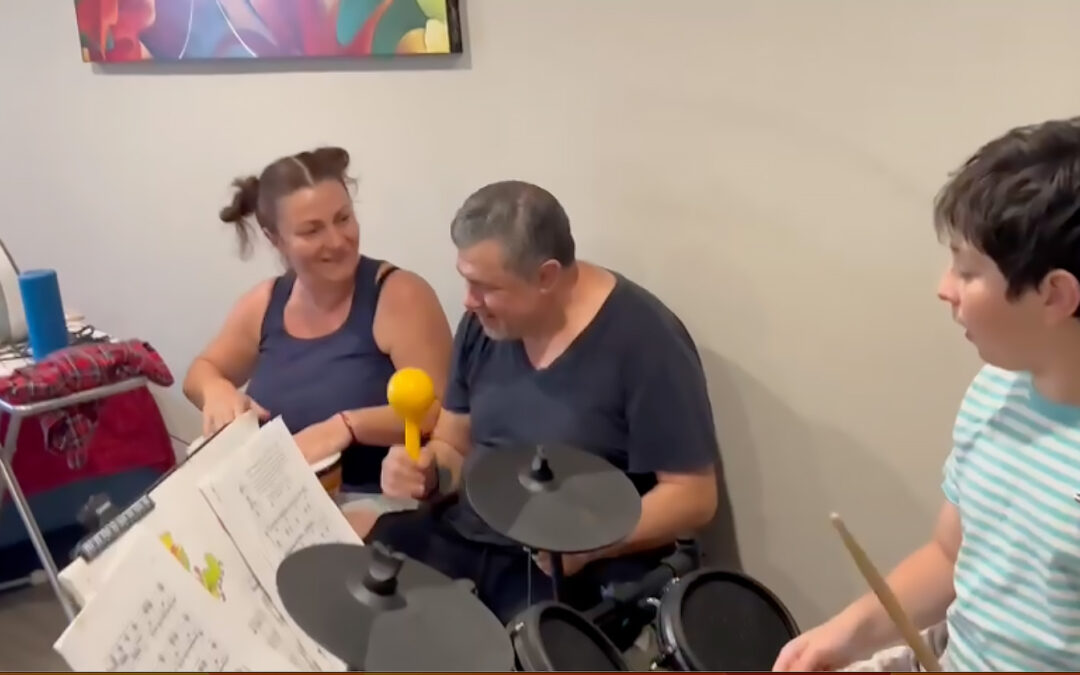Introduction: Music has long been recognized for its powerful impact on our emotions and well-being. In recent years, innovative approaches to music therapy have emerged, one of which is Drumphonics. Drumphonics combines the rhythmic power of drums with therapeutic techniques to create a unique and transformative experience for individuals with mental disabilities. In this article, we will explore the world of Drumphonics and its profound impact on the lives of those who participate.
-
Understanding Drumphonics: Drumphonics is a specialized music therapy that utilizes drums and percussion instruments to create rhythmic patterns and engage individuals in a group setting. Unlike traditional music therapy, Drumphonics places a strong emphasis on rhythm, as it has the ability to connect with our innermost emotions and transcend language barriers. Through drumming and percussion, participants can express themselves, communicate, and connect with others profoundly.
-
Benefits of Drumphonics for the Mentally Disabled: Drumphonics has been shown to have a range of benefits for individuals with mental disabilities. Firstly, it promotes communication and self-expression. For those who struggle with verbal communication, drumming offers a powerful outlet for self-expression, allowing participants to convey their emotions and thoughts through rhythm and beats. This form of non-verbal communication can be particularly liberating and empowering.
Furthermore, Drumphonics has a positive impact on emotional well-being. Engaging in drumming sessions can help alleviate stress, anxiety, and depression. The rhythmic nature of drumming releases endorphins and reduces cortisol levels, promoting a sense of calm and relaxation. It also fosters a sense of accomplishment and boosts self-esteem as participants master rhythmic patterns and contribute to the collective sound.
- Drumphonics Techniques and Adaptations: Drumphonics sessions are tailored to meet the specific needs of individuals with mental disabilities. Techniques used in Drumphonics include rhythmic patterns, call-and-response exercises, and sensory integration. Rhythmic patterns help participants develop a sense of timing and coordination, while call-and-response exercises encourage interaction and turn-taking within the group. Sensory integration techniques incorporate other sensory elements, such as movement or visual cues, to enhance the overall experience and engage participants on multiple levels.
Drumphonics sessions are designed to create a safe and inclusive environment. Instructors and therapists ensure that everyone feels comfortable and supported, adapting the activities to suit the abilities and preferences of each individual. This approach allows participants to fully engage with the music, express themselves authentically, and experience a sense of belonging within the group.
- Success Stories and Case Studies: Countless success stories highlight the transformative power of Drumphonics for individuals with mental disabilities. One such example is Emily, a teenager with autism spectrum disorder. Emily struggled with social interactions and self-expression until she began participating in Drumphonics sessions. Through drumming, Emily found a way to connect with others, express her emotions, and gain confidence. Her newfound abilities in rhythm and coordination also translated into improvements in her daily life, boosting her overall independence and well-being.
Another case study involves Marcus, a young adult with Down syndrome. Marcus had difficulty managing his emotions and often felt overwhelmed by everyday situations. However, after joining a Drumphonics program, Marcus learned to channel his emotions through drumming. The rhythmic patterns helped him regulate his emotions and provided a sense of structure and predictability. As a result, Marcus experienced fewer emotional outbursts and developed coping mechanisms that improved his overall emotional stability.
These success stories and many others demonstrate the profound impact that Drumphonics

